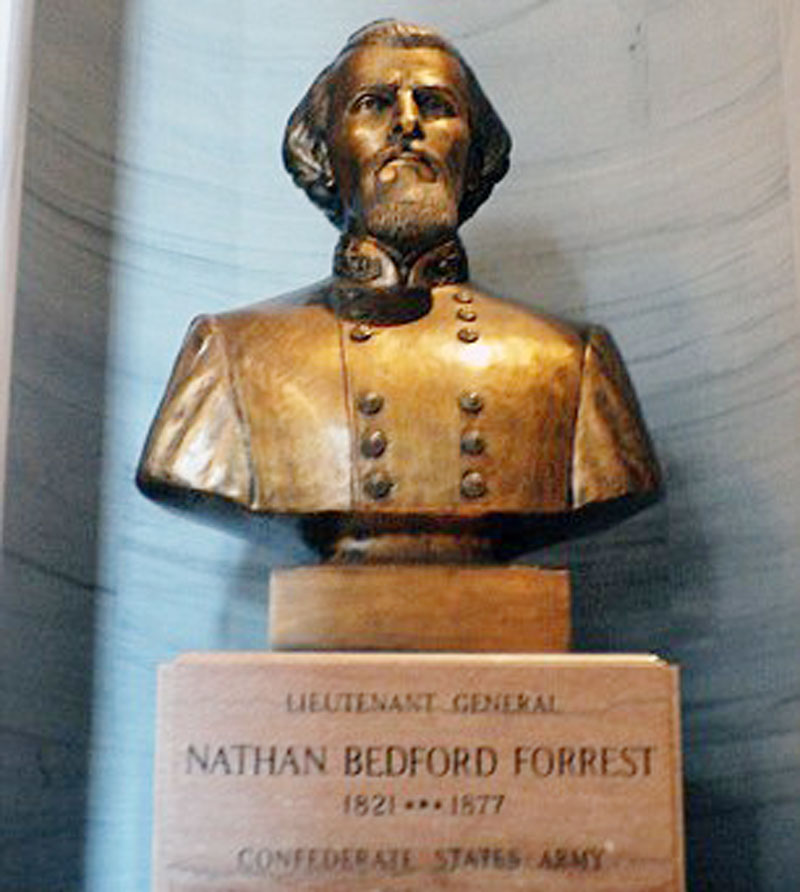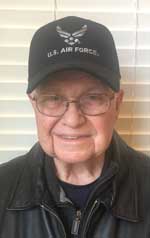Context is all Important in Understanding History
Part 3 of a series on Confederate Cavalry

The Battle of Fort Pillow was not militarily significant, but it was called a “massacre” by the New York Times, other Northern newspapers, and the Radical Republican dominated Joint Congressional Committee for the Conduct of the War. More importantly, it became an important propaganda tool to demonize the South and the Confederate cause, which still dominates much of academia, the media, and virtue-signaling American politics.
In Confederate Major General Bedford Forrest’s April 12, 1864, attack on Fort Pillow in Tennessee, of the approximately 1,500 Confederates engaged, 14 were killed and 84 wounded. Of the 585 to 605 Union defenders, between 277 and 297 were killed or mortally wounded, and another 226 men were taken prisoner. Of the prisoners, 168 were white and 64 were black. Approximately 64 percent of the black Union troops were killed and approximately 32 percent of the white troops. About 48 percent of the total Union garrison was killed. Among these were perhaps 20 Confederate deserters or draft-resistors, of whom, few if any escaped death. Of the approximately 130 Union wounded, 14 blacks and 46 whites were turned over to the Union Navy. The rest were put on a steamship headed north. Black prisoners were sent to slave labor battalions in Mobile, and most of the white prisoners were sent to Andersonville, in Georgia. Contrary to the New York Times, which claimed the dead included many women and children, the Union Navy had removed all women, children, and sick soldiers by barge and gunboat before the battle.
The makeup of the Union units is important to understanding the context. The whites were mostly from a West Tennessee Union Cavalry battalion. The black soldiers in the garrison were from the Sixth U.S. Colored Troops Heavy Artillery Battalion and D Company of the Second U.S. Colored Troops Light Artillery Battalion. Of the Union garrison of 557 soldiers, 334 were white and 253 were black. A great many of both the whites and blacks were from nearby areas of West Tennessee. This was not a territory, however, with many white Union sympathizers. In the June 1861 Tennessee Secession referendum, Lauderdale County voted for Secession 763 to 7. Morale was low in the Union garrison. Twenty men deserted on April 10 alone.
Casualty estimates in the Union garrison vary considerably by author. A Radical Republican U.S. Congress Committee on the War, originally headed by Senator Ben Wade of Ohio, estimated that 300 Union soldiers were killed. However, John L Jordan, who made an effort to account for every person on the Union rosters, counted only 182 dead of 262 black artillery men and 286 white cavalry. General Sherman considered the Congressional Report to be the usual political distortions of ambitious politicians. Wikipedia uses David J. Eicher’s 2001 estimate of 221 killed and 130 wounded.
Fort Pillow, at the western edge of Tennessee, is about 40 miles north of Memphis on a bend in the Mississippi River. It sits over a bluff about 80 feet higher than the river. Most of the bluff is steep, partly sheer cliff, but part is sloped gently enough for a path between the river and the large mostly earthen fort. There is a Tennessee State Historical Park there now, which includes well preserved breastworks, a reconstructed inner fort, museum, and many artifacts.
Fort Pillow was constructed in early 1962 by Confederate Brigadier General Gideon Pillow as a defense against Union Navy and Army attempts to control the Mississippi River and its vital commercial and military traffic. It was originally built to contain as many as 15,000 defenders but was later modified to do the job with 5,000. An important defensive feature of the fort were its surrounding rings of 6-foot thick and 6-foot high earthen mounds (parapets) with 8-foot ditches 12 feet wide in front of them. However, General Beauregard ordered it abandoned in May 1862 because it was in danger of being isolated by Union forces and various terrain features made it difficult to defend. Union forces occupied it in June 1862.
Union General William T. Sherman ordered it abandoned in early 1864, but Union Major General Stephen Hurlbut quietly reoccupied it with a small garrison a few months later, where he allowed 14 cotton traders to set up shop. The price of cotton had risen from $.06 per pound to more than $1.09. This allowed the shrewd Union Commander at Memphis and his accomplices to make a hefty wartime profit. Sherman was furious when he learned this in the aftermath of the Fort Pillow controversy.
On March 16, 1864, Forrest had left Tupelo, Mississippi, with about 7,000 troopers for his third raid into Union held western Tennessee and western Kentucky. His main objectives were recruiting men, obtaining additional horses, capturing Union supplies, and wreaking havoc on Union military operations. But he also had the goal of avenging civilian murders, rapes, and looting by the Sixth, Seventh, and Thirteenth Union Tennessee cavalry regiments. This included the unspeakable torture and hanging of a Confederate officer captured while visiting his father in Henderson County, Tennessee. Forrest had also demanded in writing to Union Brig. General Ralph Buckland that the commander of the Sixth Union Tennessee, Col. Fielding Hurst, be turned over to the Confederate Army for trial for extortion and seven murders. Buckland, of course, refused Confederate jurisdiction and took no action against Hurst.
Forrest’s raid on Union held Paducah, Kentucky on March 25 was highly successful as were recruiting and gathering suitable cavalry mounts and generous supplies of Union Army equipment and stores. Forrest heard more stories of Union outrages against Southern civilians in Paducah. Forrest had decided to bypass Fort Pillow on his return but stopped in Eaton, Tennessee, in Gibson County, where a number of ladies met with him and tearfully begged him to take Fort Pillow before he left. The black soldiers at fort Pillow were primarily former slaves that had belonged to residents of the area. Many of these were now terrorizing the families of their former masters. There had been several robberies and insulting verbal and physical abuse and a number of local women had been raped by black and white Tennessee Unionist soldiers. The local Methodist preacher, Dr. Harris, had also suffered many indignities.
Forrest was not one to tolerate indignities or suffering inflicted upon women lightly. He never tolerated it from anyone. One of his soldiers, Theodore Brewer, recalled that Forrest was always the self-appointed protector of Southern womanhood. The ladies’ accounts threw him into a rage. He promised the women: “You may go home and rest assured that I will take the fort if it costs me my life.” Military author Samuel W. Mitcham, Jr. in his book, Bust Hell Wide Open, states:
“It is clear that Bedford Forrest had one major motivation for attacking Fort Pillow: chivalry.”
After the war, Confederate Brig. General Thomas Jordan, a key Confederate staff officer to both Generals Bragg and Beauregard, a West Point roommate of Union General Sherman at West Point, later Editor of the Memphis Appeal newspaper, and co-publisher (1868) of The Campaigns of Lieutenant-General Forrest stated:
“The Union soldiers [at Fort Pillow] were also accused of venting upon the wives and daughters of Southern soldiers the most opprobrious and obscene epithets, with more than one extreme outrage upon the persons of these victims of their hatred and lust.”
On the morning of April 12, Forrest and approximately 1,500 men of Brigadier General James R. Charmers’ division had surrounded Fort Pillow “to clean out the nest of outlaws.” His other regiments were creating diversions elsewhere.
Forrest and his escort company, which included black Confederates, arrived about 10 AM. He made a reconnaissance of the terrain and fort and doubled the number of sharpshooters on the line. He was continually under fire during the reconnaissance and had three horses shot from beneath him of which two died. Forrest was painfully injured by the first fall but kept going. Except for the inner fort, Union soldiers were vulnerable to sharpshooters on higher ground. The senior officer of the fort, Major Lionel Booth, commander of the black artillery, had been killed by a sharpshooter at 9 AM. His successor was Major William F. Bradford, 24, a hated and immature Tennessee renegade from Forrest’s own Bradford County. The earthen defensive parapets around the fort also turned out to be a disadvantage for the defenders. Climbing to the top made the soldier an easy mark for sharpshooters. In addition, the artillery could not be turned low enough to hit Forrest’s men below, who were also largely protected by a deep ravine. In addition, Bradford opened the fort’s alcohol stores to booster his men’s courage.
Forrest and his staff and commanders realized quickly that the Union position was hopeless. After waiting for his supply wagons to catch up at 3 PM, he offered honorable surrender terms to all Union troops under a flag of truce. Bradford, however, apparently placed his hope on rescue by Union gunboats and troop transports that were fast approaching and stalled for time. Forrest, however, had positioned 400 men in cross-firing positions on both sides of the two-foot wide path from fort to river, and the troop transports were not able to land. The assault on the fort and desperate retreat of fleeing Union troops down the bluff will be continued next week.









 Mike Scruggs is the author of two books: The Un-Civil War: Shattering the Historical Myths; and Lessons from the Vietnam War: Truths the Media Never Told You, and over 600 articles on military history, national security, intelligent design, genealogical genetics, immigration, current political affairs, Islam, and the Middle East.
Mike Scruggs is the author of two books: The Un-Civil War: Shattering the Historical Myths; and Lessons from the Vietnam War: Truths the Media Never Told You, and over 600 articles on military history, national security, intelligent design, genealogical genetics, immigration, current political affairs, Islam, and the Middle East. 


